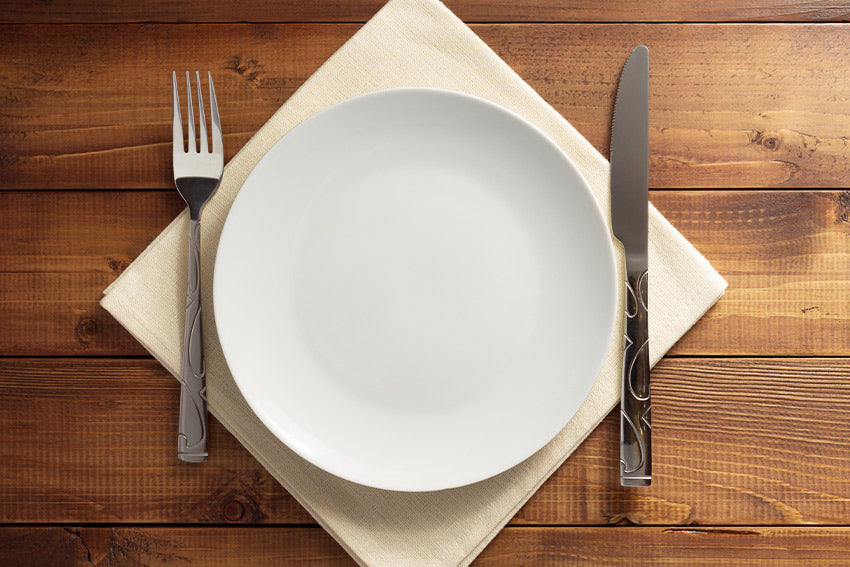The health and fitness community is enamored with intermittent fasting - a system that isn’t a diet but an eating cycle that dictates not what you eat but when you eat it. Is this a fad or does it actually work?
Harvard Health states that there is promising research to prove that intermittent fasting is safe and just as effective as dieting and calorie reduction for losing weight. The theory behind fasting is that carbohydrates such as glycogen get broken down into sugar to be burned off as energy. Insulin is the hormone that ferries the sugar into the fat cells. When the body isn’t consuming food, insulin levels go down.
Glycogen is burned for energy. and then the fat cells release fat. to be burned as energy. Likewise, when you are fasting, your insulin levels dip. Decreasing the amount of time when our cells experience high levels of insulin help present insulin insensitivity and the risk of diabetes. According to Healthline, altering the hormones with short term fasting can cause the body to release more norepinephrine, a natural fat burner, and thusly increase your metabolic rate by up to 14%.
Some experts praise this method for its effortless ability to make a healthy eating routine. Kathy McManus, the director of the Department of Nutrition at Brigham and Women’s Hospital says that intermittent fasting has a mental benefit because there is no calorie counting or measuring involved. In this sense, it is often easier to stick to and sustain for longer periods of time. Not all nutritionists are as enamored with the fast. According to Web MD, some experts believe that fasting can be dangerous and possibly ineffective for weight loss since once you return to your regular diet the weight will come back. They also point out that prolonged fasting can cause the body to go into starvation mode and hold onto weight, though it would take fasting beyond 72 hours before the metabolism would slow down.
Despite the detractors, it does seem to be effective for shedding weight when done properly. According to Healthline, alternate day fasting promoted even more weight loss, sometimes up to two pounds a week, than calorie restriction. A study done to test the effects of fasting for type two diabetes prevention by Science Direct found the added benefit of increased weight loss. Plus, according to the National Institute of Health, the benefits go beyond that of weight loss including better focus, metabolic health, disease prevention, and life longevity. Forbes points to a study that shows a promising study that links prolonged fasting (48 hours or more) to resetting the immune system and jumpstarting stem cell regeneration.
There are several different methods to intermittent fasting which can work for different people:
- The 5:2 diet fast finds you fasting for 2 days a week and eating normally 5 days a week. On the fasting days, you restrict calories to 500-600 per day, such as skipping breakfast and lunch and eating only a healthy dinner. This is also known as the “fast diet”.
- The 16:8 method has you follow a 16 hour fast and an 8-hour window eating plan per day. Pop Sugar states that this is also known as the “Leangains protocol”. The easiest way to do this is to skip breakfast, start eating at noon and then stop after dinner. Water, coffee, and non-caloric beverages are allowed in between meals. One bonus to this eating style is that you don’t have to be as stringent with carbs or fat since you are eating fewer – within moderation of course.
- The eat-stop-eat diet consists of a full 24-hour day fast. This would mean starting at 8 am and not eating until the next day at 8 am.
- The Warrior diet is similar to an intermittent fast when abstaining from eating goes on for 20 hours and provides a four-hour eating window in the evening. According to Livestrong, during the 20-hour window, you can “undereat” with raw fruits and vegetables and have clear broth and hard-boiled eggs. Then during the “overeating” window, for 4 hours you can have one large mean or multiple small meals with protein, whole grains, vegetables, and cheese. This diet included a second and third phase where a high-fat section is added in and then alternating between high and low carb meals is layered in as well.
The simplest way to do an IF for a beginner may be to limit the hours you eat to nighttime. For instance, no eating after 6 pm. That way most of your fasting hours are while you are asleep. Avoiding eating at nighttime is a good rule in general. Some find that it is easier to eat this way and also easier to stick to this eating plan which doesn’t include counting calories, cutting food groups, or other restrictions, other than eating at certain times. If you can stick to eating during your window, then you can follow this plan.
It is important that if you are going to employ this method to try to lose weight that you do not snack between meals or eating periods. You need to give your body time to let your insulin level drop and burn fat.
If you aren’t sure this is for you, try it on for size slowly. Try one day a week or once per month. As long as you continue to eat healthy meals with normal size portions and follow the system consistently, you should see results and reap the many rewards.





















Leave a comment
This site is protected by reCAPTCHA and the Google Privacy Policy and Terms of Service apply.